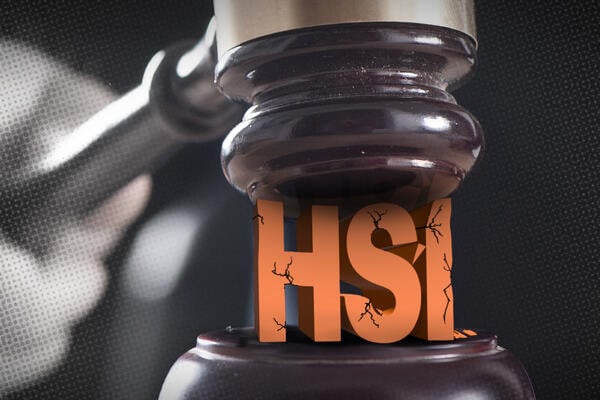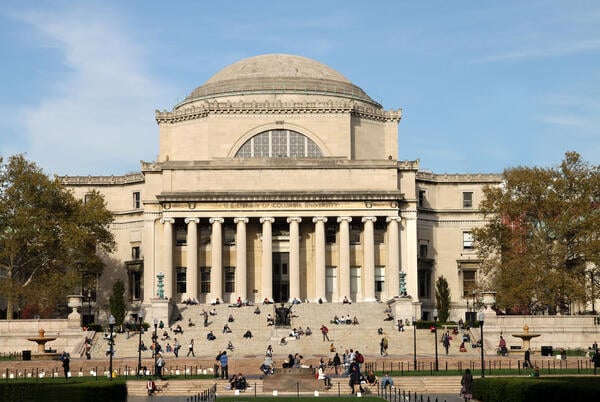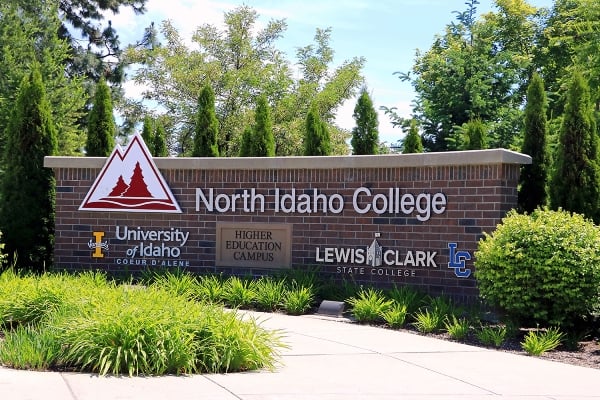Two years after its Supreme Court victory against Harvard and UNC Chapel Hill, Students for Fair Admissions has a new target in its sights: Hispanic-serving institutions. On Wednesday, the advocacy group joined the state of Tennessee in suing the U.S. Department of Education, arguing that the criteria to become an HSI are unconstitutional and discriminatory. The move is distressing HSI advocates, who hoped to see the institutions left out of the political fray.
To qualify as an HSI, a college or university needs to have a student body comprised of at least 25 percent Hispanic students and enroll at least 50 percent low-income students, or more than other comparable institutions, among other criteria. No Tennessee institutions operated by the state meet the threshold and are thus prohibited from applying for HSI-specific grants—even though they serve Hispanic and low-income students, according to the Tennessee attorney general and SFFA. As a result, the federal designation criteria amounts to discrimination, and Tennessee universities and students suffer as a result, the plaintiffs argue.
They also say Tennessee institutions find themselves in an “unconstitutional dilemma”: Even if they wanted to, they argue, they can’t use affirmative action to up their Hispanic student enrollments since the U.S. Supreme Court ruled against using race as a factor in college admissions. That 2023 decision resulted from lawsuits SFFA brought against Harvard and the University of North Carolina at Chapel Hill.
“The HSI program is particularly egregious in terms of how it treats students based on immutable characteristics,” Tennessee attorney general Jonathan Skrmetti, who’s representing the state in the suit, told Inside Higher Ed. “It is just manifestly unfair that a needy student in Tennessee does not have access to this pool of funds because they go to a school that doesn’t have the right ethnic makeup.”
The lawsuit calls for “a declaratory judgement that the HSI program’s ethnicity-based requirements are unconstitutional” and “a permanent injunction prohibiting the [Education] Secretary from enforcing or applying the HSI program’s ethnicity-based requirements when making decisions whether to award or maintain grants to Tennessee’s institutions of higher education.”
HSI proponents may be jarred by the legal challenge, but they aren’t entirely surprised. Conservative think tanks like the Manhattan Institute and the American Civil Rights Project have previously proposed abolishing enrollment-based minority-serving institutions (MSIs), including HSIs and Asian American and Native American Pacific Islander–serving institutions, which are defined as enrolling 10 percent of students from these groups.
“It was only a matter of time before the anti-DEI movement hit the enrollment-based MSIs,” said Gina Ann Garcia, a professor who studies MSIs in the school of education at the University of California, Berkeley. “It still was a punch to the gut.”
2 Sides At Odds
Congress established the HSI program in the 1990s to improve the quality of education at colleges and universities that disproportionately serve Latino students, who were concentrated at colleges with relatively fewer financial resources. They’ve historically enjoyed bipartisan support. Last year, the federal government appropriated about $229 million for the country’s roughly 600 Hispanic-serving institutions; $28 million of that funding went to 49 of the HSIs that applied for the competitive grants.
Deborah Santiago, co-founder and CEO of Excelencia in Education, an organization that promotes Latino student success, believes the lawsuit mischaracterizes the program and its role in the national higher education landscape. She said it’s in the country’s “self-interest” to invest in colleges and universities with limited resources that serve a growing student population with stubborn degree-attainment gaps.
“If a disproportionate number of students of any background are at an institution that has a high enrollment of needy students, low educational core expenditures and serves a high proportion of students that that could benefit from that [funding] to serve the country, I don’t think that’s discriminating,” she said.
She also stressed that the grant program “doesn’t explicitly require any resources to go to a specific population” but funds capacity-building efforts, like building new laboratories and facilities, that benefit all students at the institution.
The HSI program is a way “to target limited federal resources and meet the federal mandate of access for low-income students,” she said. “We know that it costs more to educate Hispanic students, because they’re more likely to be low income and first gen, so college knowledge, student support services—all of that takes institutional investment.”
But opponents of HSIs don’t buy it.
Wenyuan Wu, executive director of the Californians for Equal Rights Foundation, a think tank and watchdog organization focused on promoting “equal rights and merit,” firmly believes enrollment-based minority-serving institutions are discriminatory and applauded the lawsuit as a step in the right direction.
She argued that HSI funding has gone to efforts specifically to support Latino students, including some she sees as “ideological.” For example, the University of Connecticut at Stamford proposed using the funding to start a program called Sueño Scholars, to “recruit, support and mentor undergraduate Hispanic, other minority, low-income, and high-need students” to enter teaching graduate programs and included a goal of “developing and sustaining antiracist orientations towards teaching and learning,” according to the department’s list of project abstracts.
Wu asserted that putting federal money toward efforts like these is a problem. She’d rather see the funds designated for HSIs channeled into Pell Grants or other supports for low-income students.
“Taxpayer funds should not be used to engage in racial balancing, and that’s exactly the kind of behavior that has been incentivized by MSIs,” said Wu, who is also chair of the Georgia Advisory Committee to the U.S. Commission on Civil Rights.
Possible Outcomes
Robert Kelchen, head of the Educational Leadership and Policy Studies Department at the University of Tennessee at Knoxville, believes the lawsuit has “a possibility of success.” It was filed in a conservative-leaning federal district court in Knoxville, and Tennessee seems to have shown it has legal standing, he said.
Even “if the court here in Knoxville doesn’t agree, another state could choose to file a similar lawsuit in their district court as well,” he said. Ultimately, “the question is, can they find one court that agrees with the plaintiffs’ interpretation.”
The move by Tennessee comes just a week after the federal government successfully sued Texas to eliminate in-state tuition for undocumented students—a policy Republican state lawmakers had tried but failed to end. The Texas attorney general celebrated the challenge, siding with the U.S. Department of Justice in a matter of hours, and a judge promptly quashed the two-decade-old state law. (Stephen Vladeck, a professor of law at the Georgetown University Law Center, called the episode “transparently collusive.”)
Kelchen believes the Tennessee lawsuit is following a similar playbook. He expects to see more red states and conservative organizations sue the Education Department on issues where they align “to get rid of things that neither of [them] like,” he said—though in Tennessee’s case, it’s unclear how the department will respond.
Skrmetti told Inside Higher Ed that “from Tennessee’s perspective, this is not part of a broader strategy to influence education policy. This is about discrimination against Tennessee schools because of the ethnic makeup of their student bodies.”
If the plaintiffs win, it’s unclear whether that would mean changing the federal definition of an HSI to eliminate a Hispanic enrollment threshold or axing the HSI program altogether. The implications for other types of enrollment-based minority-serving institutions are also hazy.
Skrmetti is open to multiple options.
“At the end of the day, there’s [HSI] money out there to help needy students, and we want to make sure that needy students can access it regardless of the ethnic makeup of the schools they’re at,” he said. “There are a couple different avenues I think that could successfully achieve the goal operationally. We need to just get a declaration that the current situation does violate the Constitution.”
Santiago, of Excelencia in Education, said there’s room for “thoughtful discussion” about reforming or expanding requirements for HSI grant funding, but she believes “it needs to come from the community.”
She also pointed out that the lawsuit is against the Department of Education, which administers HSI funding but doesn’t control it—Congress does. So the department doesn’t have the power to end the funding.
Nonetheless, “it would be foolish to not take it seriously,” she said.
Garcia, the Berkeley education professor, said that while she’s not a lawyer, she believes there are legal questions worth raising about the lawsuit, particularly the way it leans on the Supreme Court’s ruling against affirmative action in admissions.
She pointed out that HSIs tend to be broad-access or open-access institutions that admit most applicants, rather than selective institutions explicitly recruiting Latino students; only about two dozen of the 600 HSIs are highly selective, she said. So, the assertion that HSIs have any connection to the affirmative action ruling is up for debate, she said.
Skrmetti believes it’s a cut-and-dried case.
“You can’t make determinations about the allocation of resources based on ancestry or skin color or anything like that without inherent discrimination,” he said. “We need to help all needy students. And the HSI designation is an obstacle to that.”
Garcia believes that regardless of whether the lawsuit is successful, it’s already done damage to HSIs by dragging them—and enrollment-based MSIs in general—into the country’s political skirmishes over diversity, equity and inclusion.
“I’ve been just watching HSIs fly a little bit under the radar,” she said. “They don’t come up a lot” in national conversations about DEI. But the lawsuit “brings HSIs into the light, and it brings them into the attack.”
She worries that students are the ones who will suffer if HSIs no longer receive dedicated funding.
HSIs “are often underresourced institutions,” she said. “They’re institutions that are struggling to serve a large population of minoritized students, of students of color, of low-income students, of first-gen students. We’re not talking about the Harvards and the Columbias.”



